Do you have enough sweetness in your life? Maybe you could use a taste of the tropics right about now. Our board member Chris Jacobs just returned from a scouting trip to Grand Cayman. Chris explored the island in search of tropical fruits, unique plant species and tales of bush medicine.
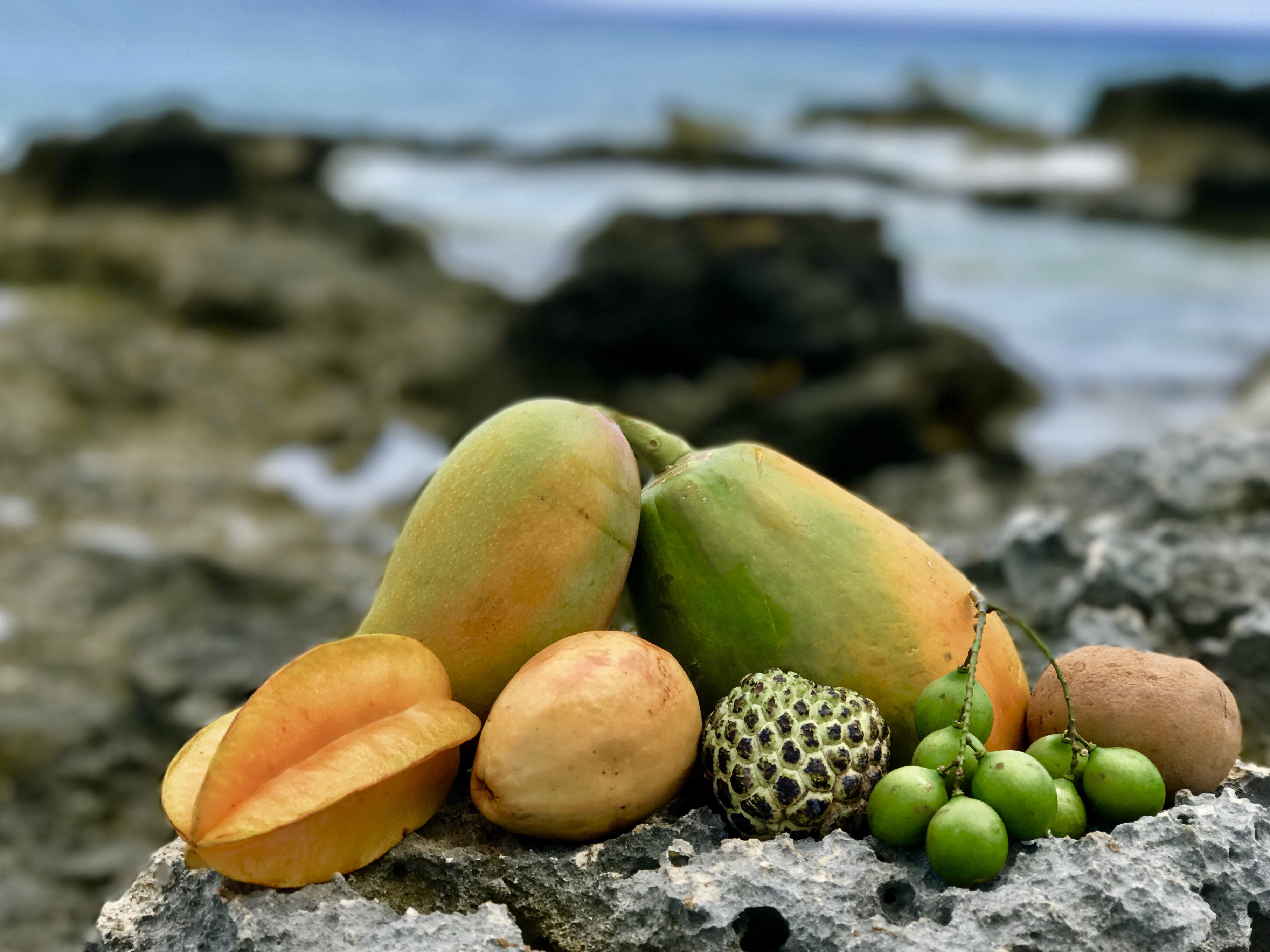 From left to right
From left to right
Starfruit (Averrhoa carambola) Wood sorrel family
Guava (Psidium guajava) Myrtle family
Mango (Mangifera indica) Cashew family
Papaya (Carica papaya) Papaya family
Sweetsop (Annona squamosa) Custard apple family
Genip (Melicoccus bijugatus) Soapberry family
Sapodilla (Manilkara zapota) Sapote family
“I grew up in south Florida surrounded by tropical fruits for the first 25 years of my life. At some point after living in North Carolina for a few years I realized that not many people grew up with mango and coconut trees in their backyard. Growing up in the tropics is a whole different world. We had so many unique tropical fruits all around us. Mangos in the summer, citrus fruit in the winter. Fruit is simply a way of life.
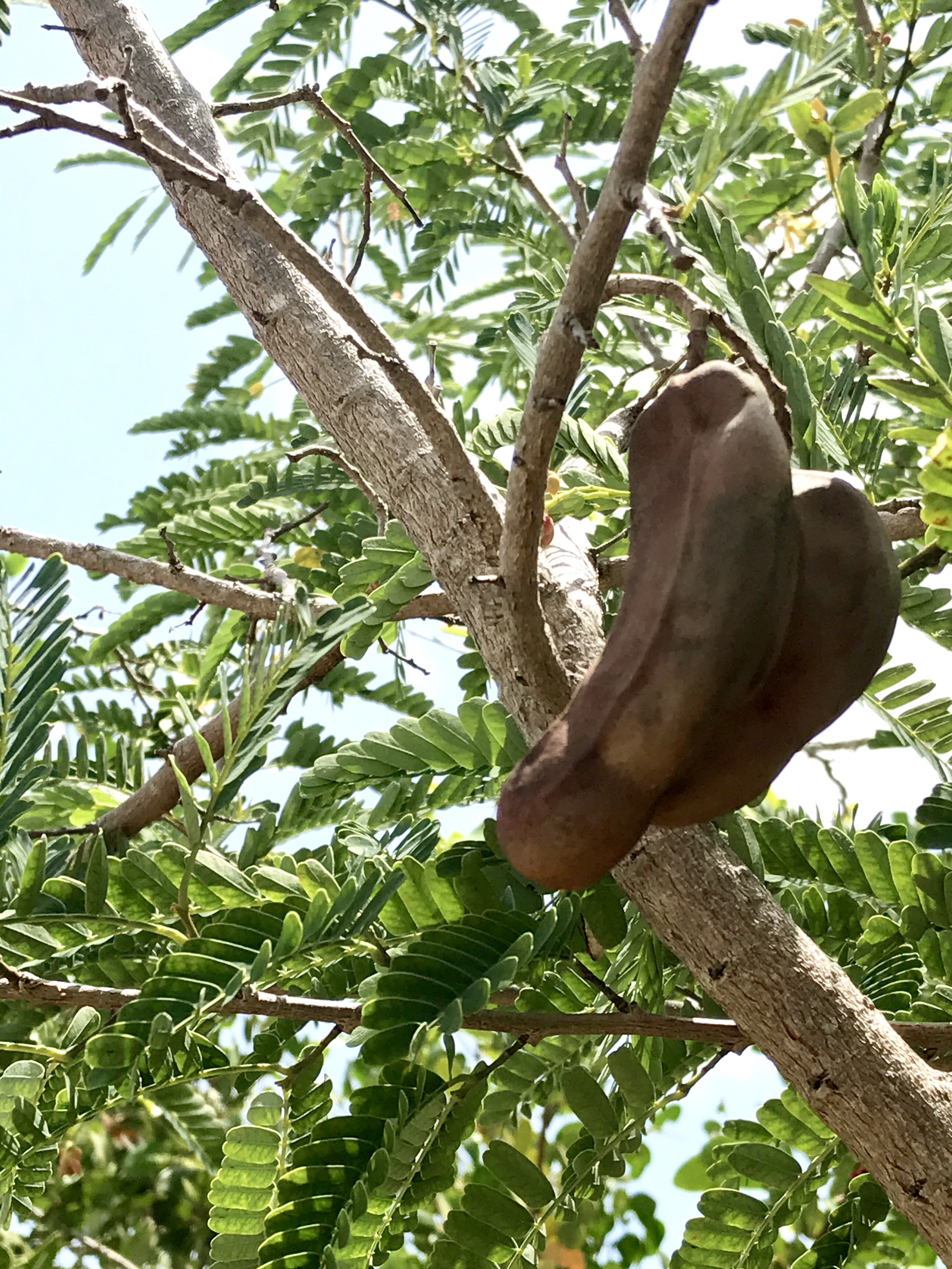
When I went to Grand Cayman I knew I had to search out a few unique specimens to share with y’all. I spent time searching along the roadways, in the national park and at the local farmers market collecting these tropical treasures. The Cayman Islands like most tropical paradise are covered in fruit trees. Just about every backyard has a mango tree or a bread fruit tree in it. Many fruit trees grow along the roadways. While driving along I spotted a familiar member of the bean family. I jumped out and scored some fresh tamarinds. While I was picking away a local passed by on a bike and shouted out “dat da good stuff mon!”. Tamarind (Tamarindus indica) pea family
There is a certain kinship that happens around wild foraging. On many of my travels I am often picking fruit and when someone notices they question me. Them: “Isn’t that poisonous?” Me: “no this is heavenly!” Once they give it a try they are usually blown away that this delight has been under their nose the whole time. This just happened on this trip with cocoplums, I got two ladies to give them a go and they loved them. I said “Looks like a plum tastes like a coconut.” Nature is a trip!
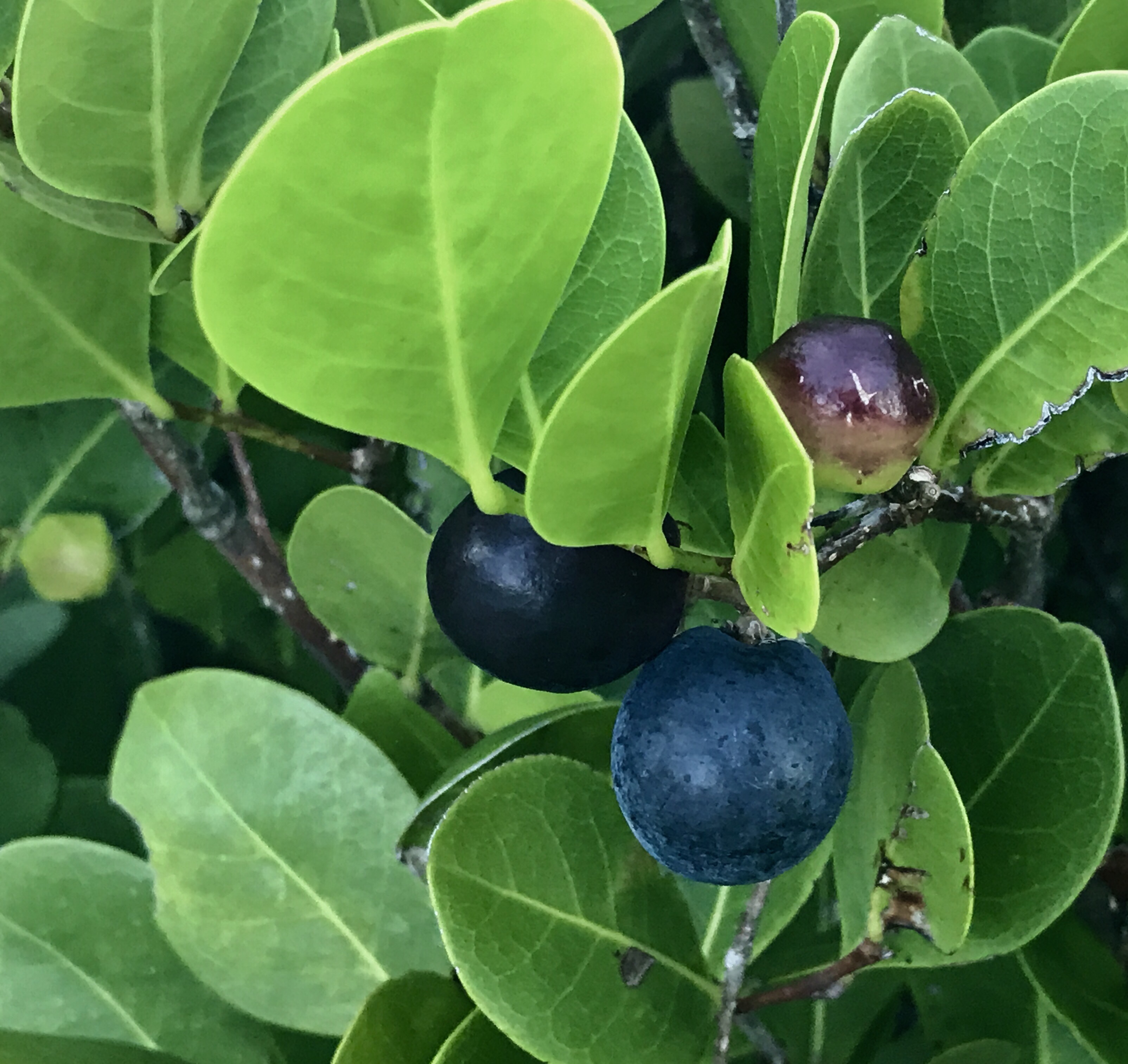
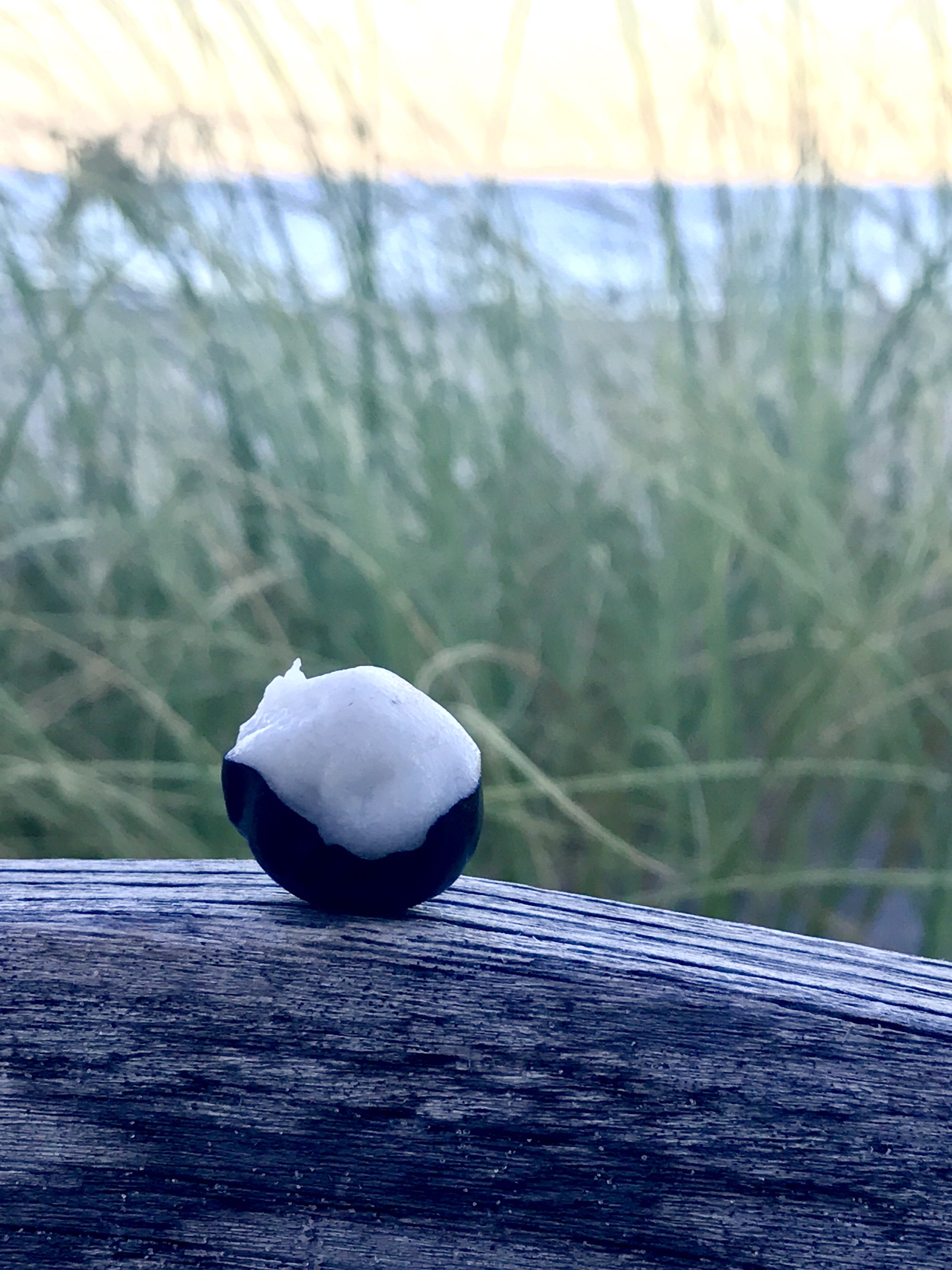
Cocoplum (Chrysobalanus icaco) Cocoplum family
This fear people have of wild foods brings up an important point for me. People all across the earth are losing their indigenous knowledge of the plant kingdom. Learning about plants was a necessary survival skill on this earth up until the last couple generations. Bit by bit knowledge is being forgotten. From foods, to crafts, to medicines the young people have bought into the flashy consumer culture with plastic wrapped factory foods and forgotten about grandma’s teachings. Even on Grand Cayman the youth are not picking up on some of the traditional basket crafts. Many plant healers across the globe are complaining that the kids don’t want to learn the medicine ways. This is what we at Plants and Healers think about daily. Our mission is to learn about plants and their traditional uses all around the globe. Break down the green wall for all people who have been lost in the maze of the modern world.
I know I know, this article is supposed to be about sweet fruits from the Caribbean islands but like many fruits that have those sweet sugars we desire there is often a bitter rind that we have to pierce through to get to the juicy pulp. The threat of loss of culture is an incredibly important issue in our time. We all have to do what we can to prevent this catastrophic loss.
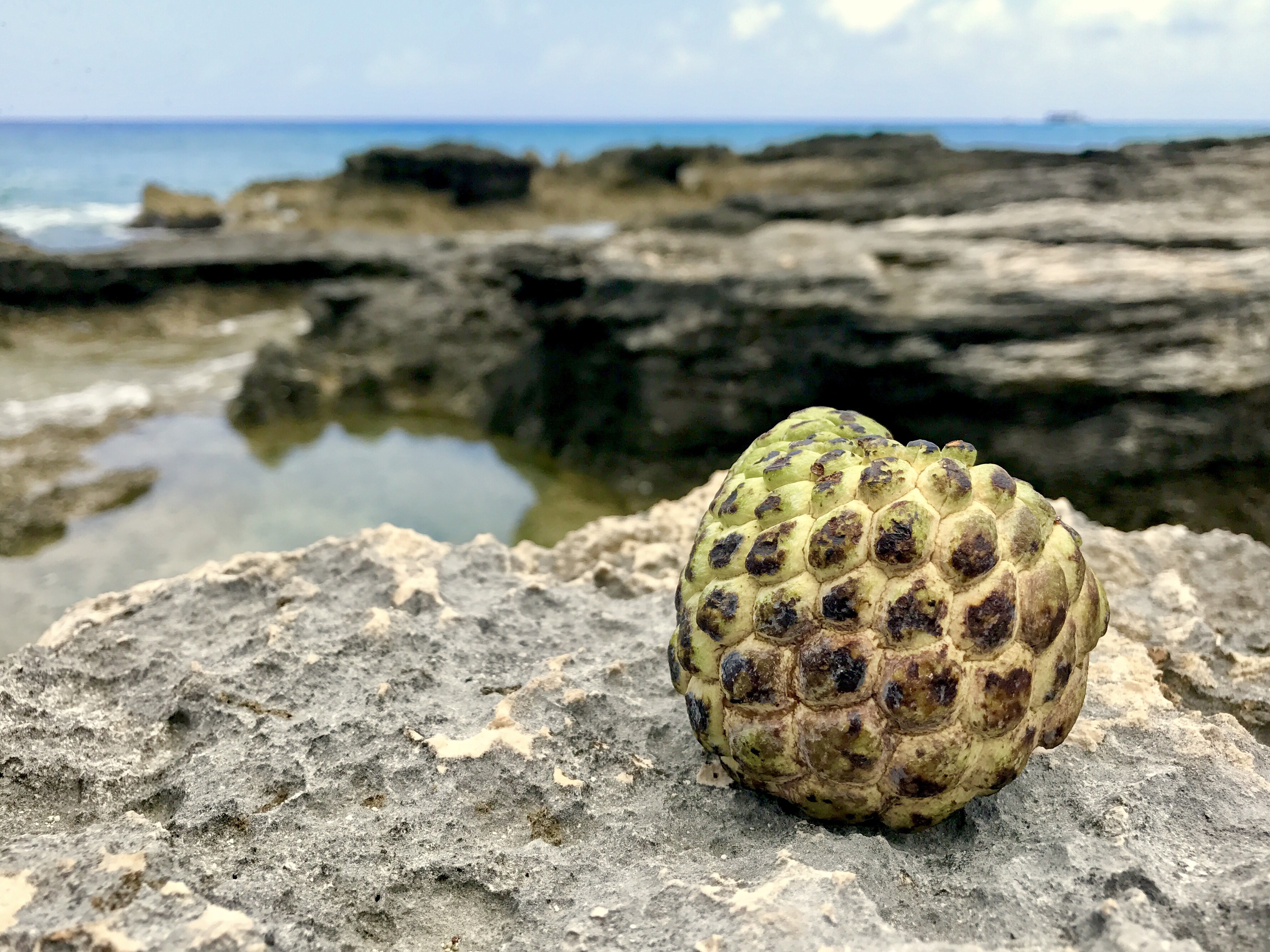
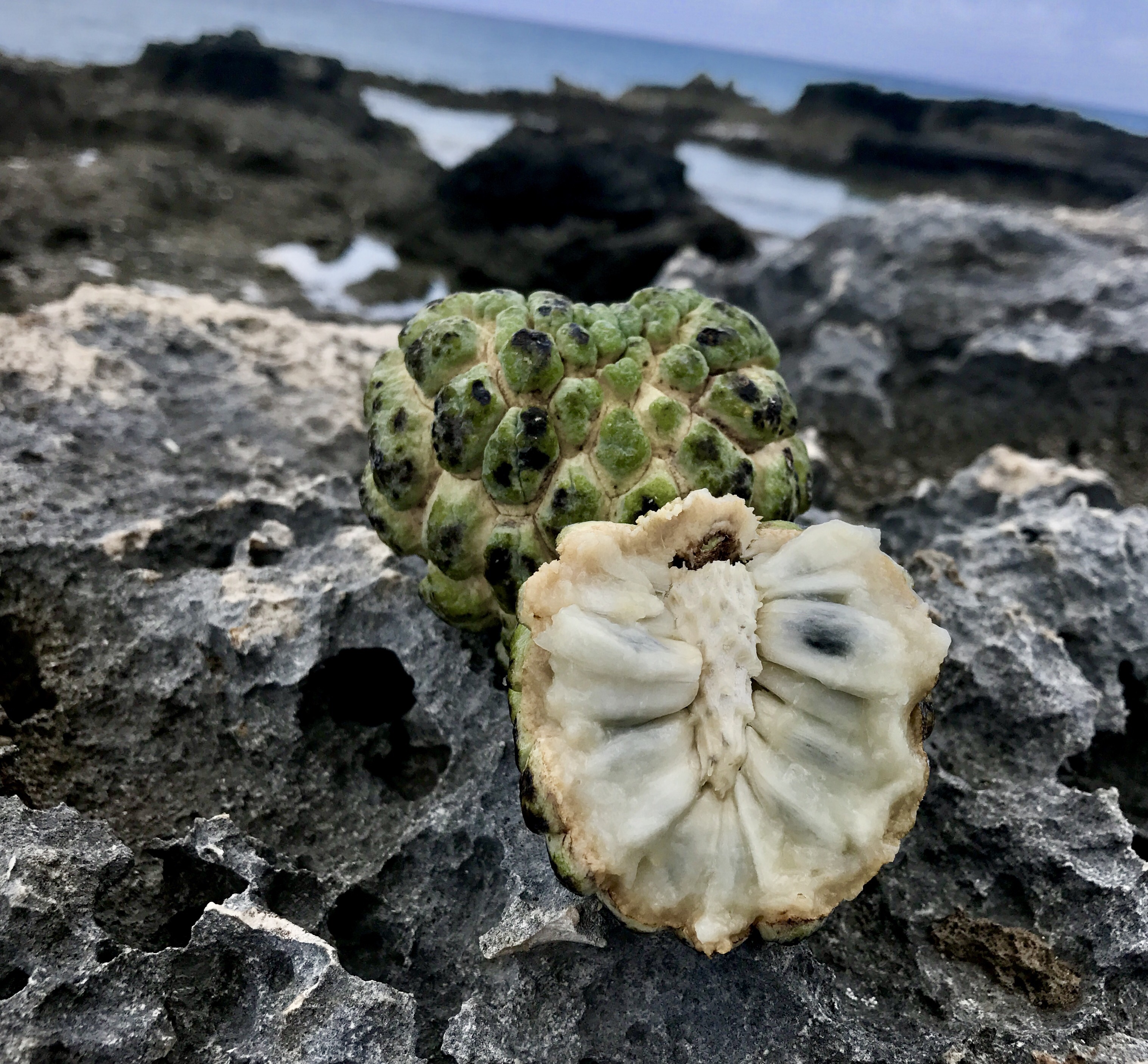
Sweetsop (Annona squamosa) Custard apple family (Annonaceae)
This fine specimen is a relative of the Pawpaw (Asimina triloba) of North American and the Cherimoya (Annona cherimola) of South America. Speaking of South America have you heard about our trip to Peru in November? Click here for more details. The sweet sop has a pudding like texture which gives the name Custard apple. The sweet flesh surrounding rock hard seeds is reminiscent of Banana, with slight apple undertones. But be careful of the rind because it will leave a bitter taste in your mouth. When looking for fruits in this family you will know they are ripe when they are very soft.
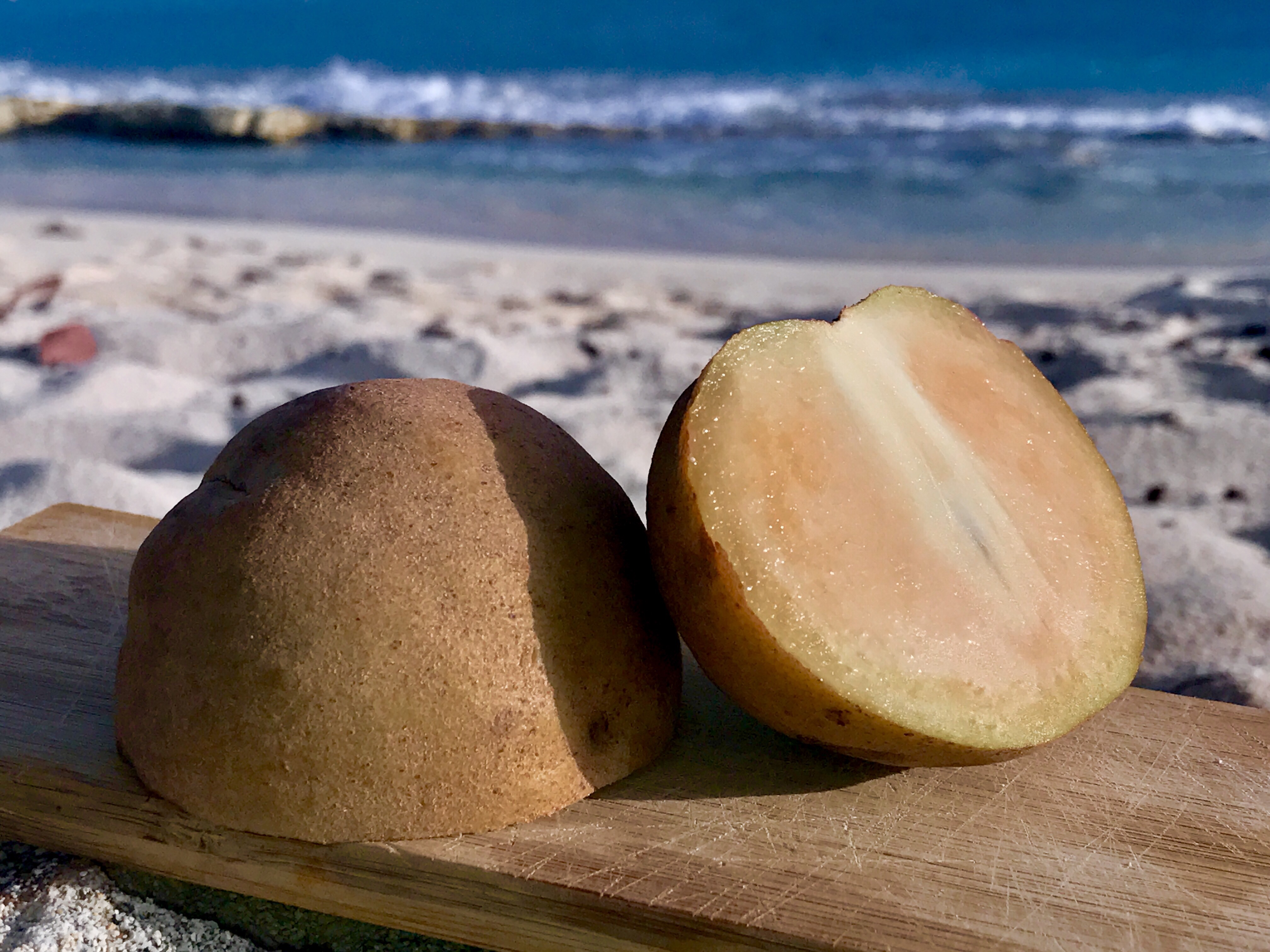
Sapodilla (Manilkara zapota) Sapote family (Sapotaceae)
Sapodilla is another fruit which similar to the Sweetsop is best eaten when super soft. The flavor of this fruit is like brown sugar. Be careful to get a ripe one if they are even a little unripe they will pucker your mouth with strong astringency. This fruit is closely related to one of my favorite fruits the Mamey Sapote (Pouteria sapota). Mamey has a deep red color and tastes like maple syrup and sweet potatoes. Unfortunately no Mamey on this trip.
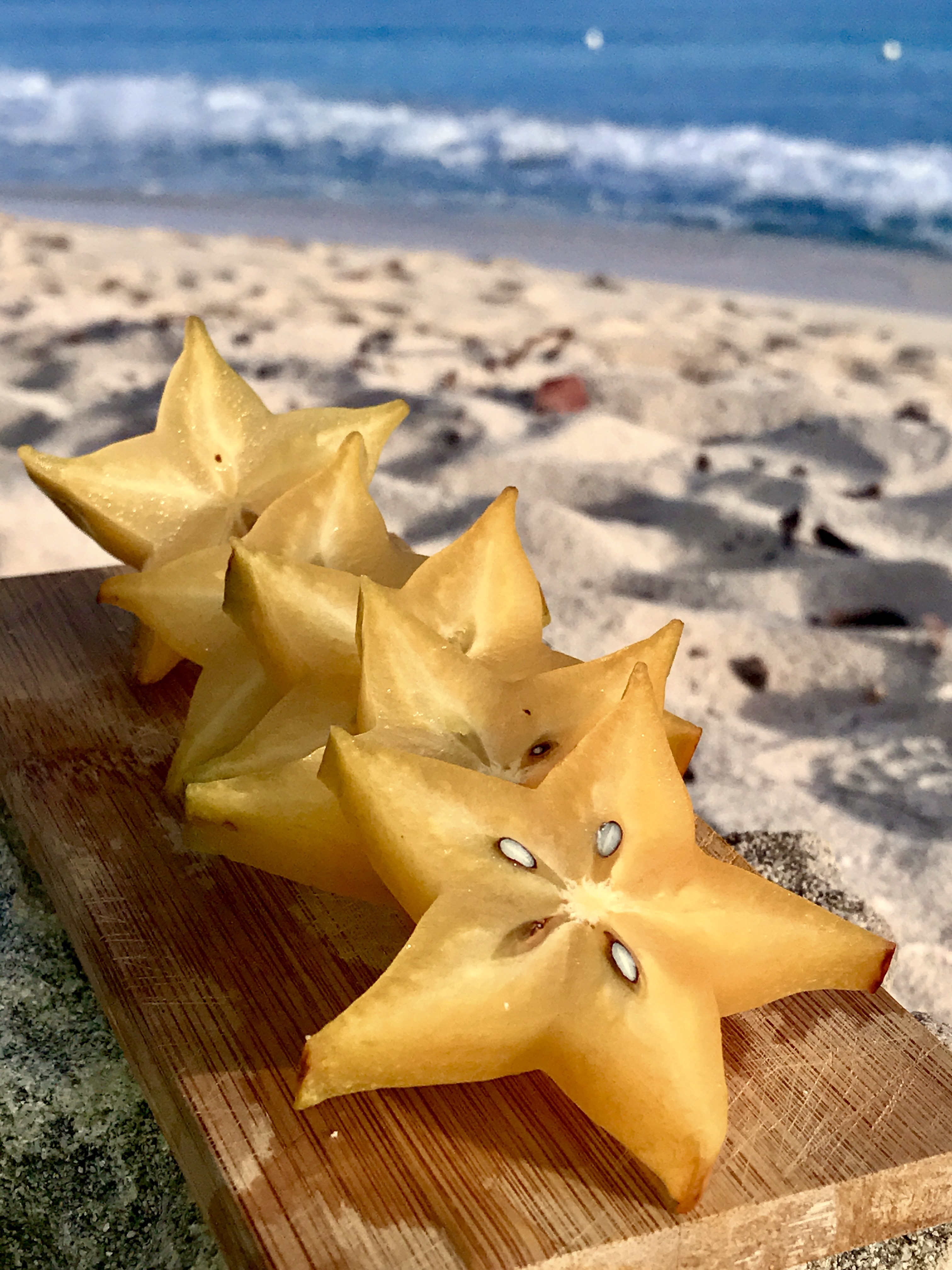
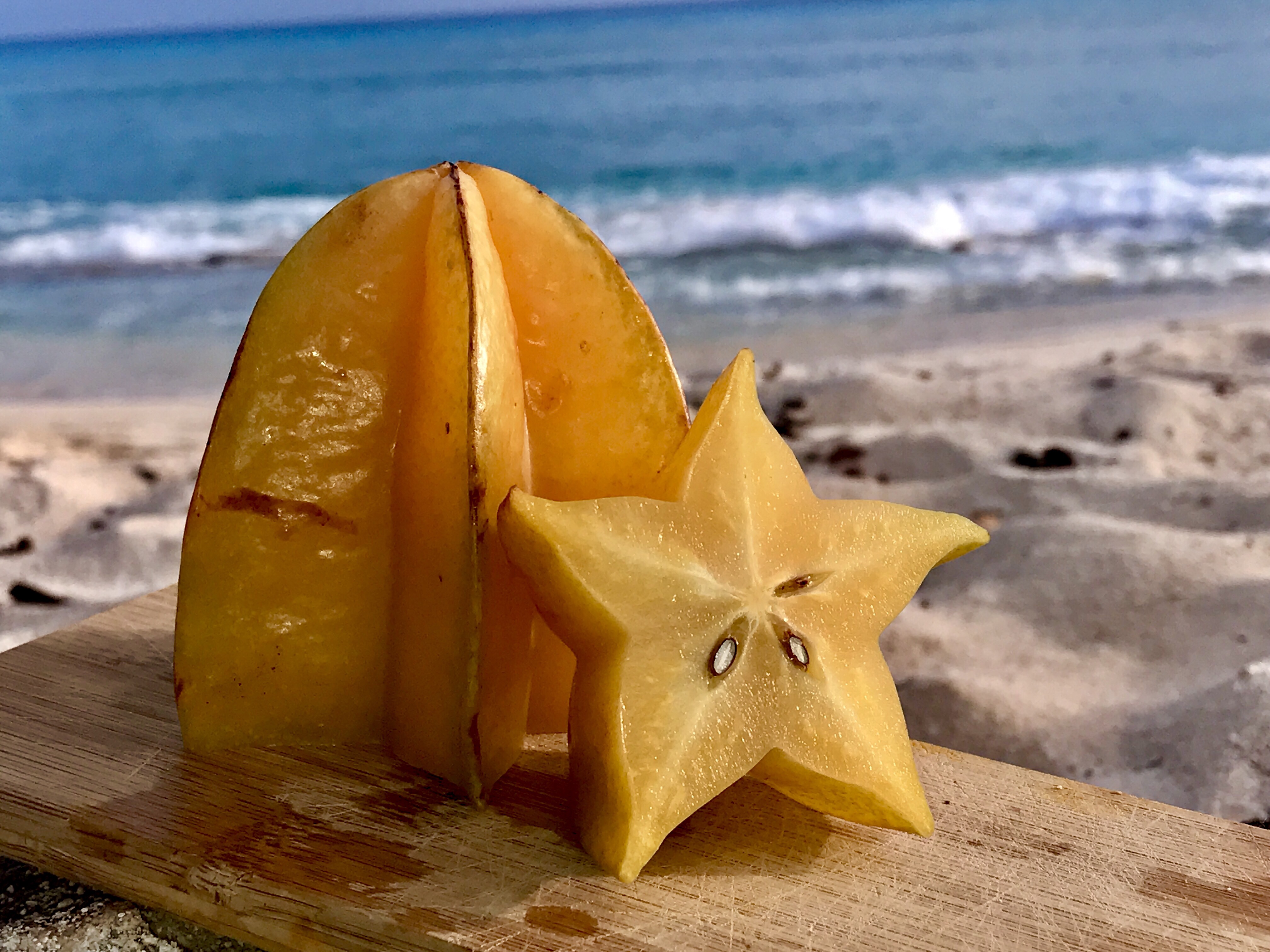
Starfruit (Averrhoa carambola) Wood sorrel family (Oxalidaceae)
Star fruit is one of the only fruits from the wood sorrel family (Oxalidaceae). Like those lovely little trail side nibbles sour grass or wood sorrel star fruit (Oxalis spp.) has sour almost citrus like flavor. They are incredibly juicy and refreshing on a hot sunny day. Some varieties are more astringent than others
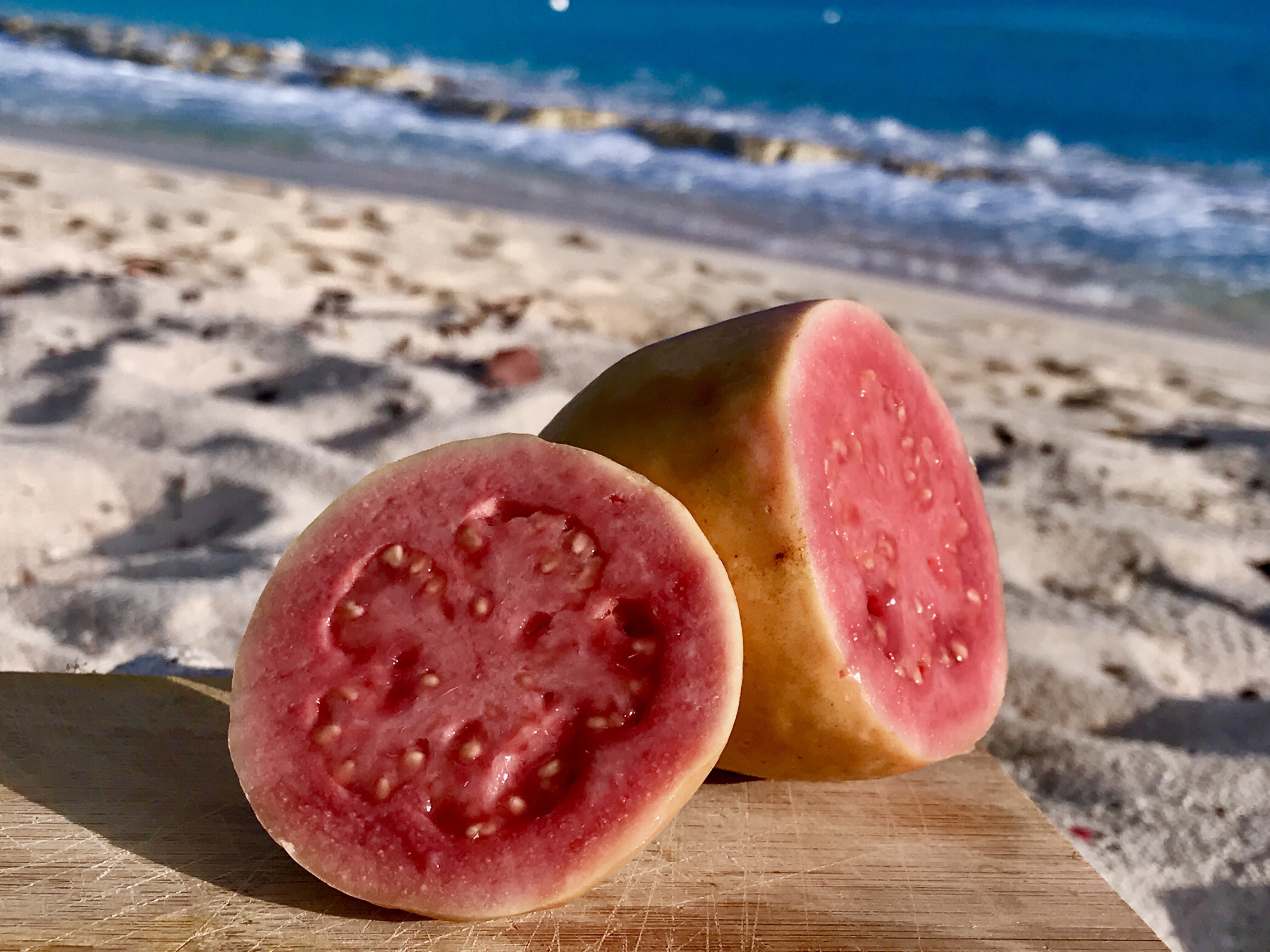
Guava (Psidium guajava) Myrtle family (Myrtaceae)
Guava is an incredibly popular fruit in the Caribbean especially a few hundred miles north of Cayman in Cuba. This fruit is used for all kinds of jams and jellies but most importantly is a major component in Cuban pastries. Growing up in Cuba Nuevo or South Florida, I have eaten my fare share of pastelitos de guayaba. These are flakey Cuban renditions of croissants filled with guava jelly and sometimes cheese. Combine this with a little cafe Cubano and you have found Cuban soul food. The flavor of guava is a little difficult to describe. To me it is a floral musky scent that always reminds me of tropical island paradise. The texture is a bit grainy and there are a ton of little hard seeds but believe me it is worth it.
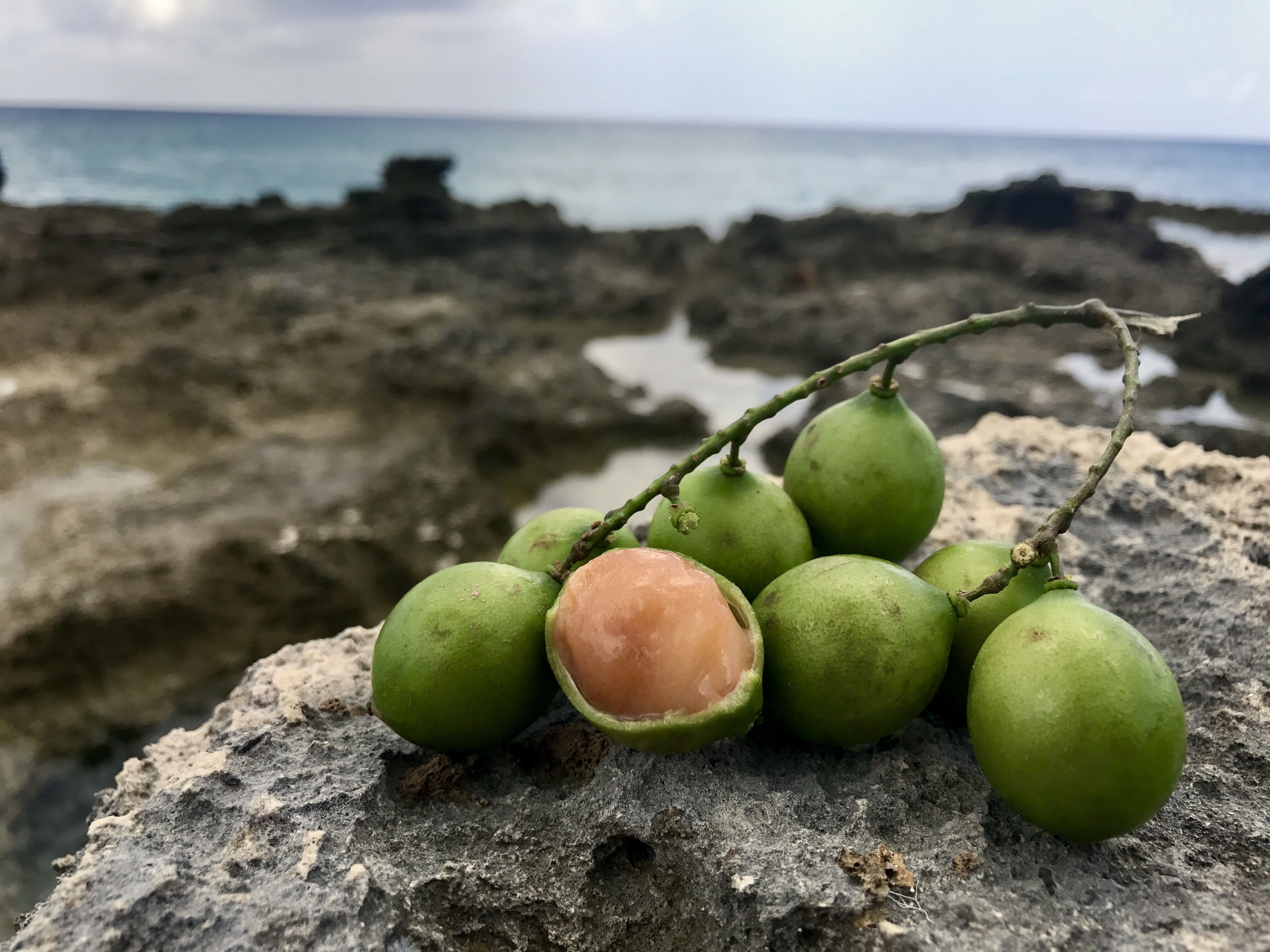
Genip (Melicoccus bijugatus) Soapberry family (Sapindaceae)
This fruit is my all time Caribbean favorite! I couldn’t get enough of them. We pretty much traveled the whole island slurping down these tasty treats. I first learned about the Ginep when a Caymanian class mate introduced me to them in college. She found me some in Miami from a street vendor near Little Havana. I have been missing them ever since. You eat the ginep somewhat similarly to a lychee. Crack the shell with your teeth and prepare to be delighted. The flesh around the fairly large seed is rather stringy so you will have to work it around your mouth for a while to get all the goodness. I think the work involved is actually part of the appeal. The flavor is a bit like a perfectly sweetened lemonade with some aromatic notes. If I could have brought any fruit back this would have been it.
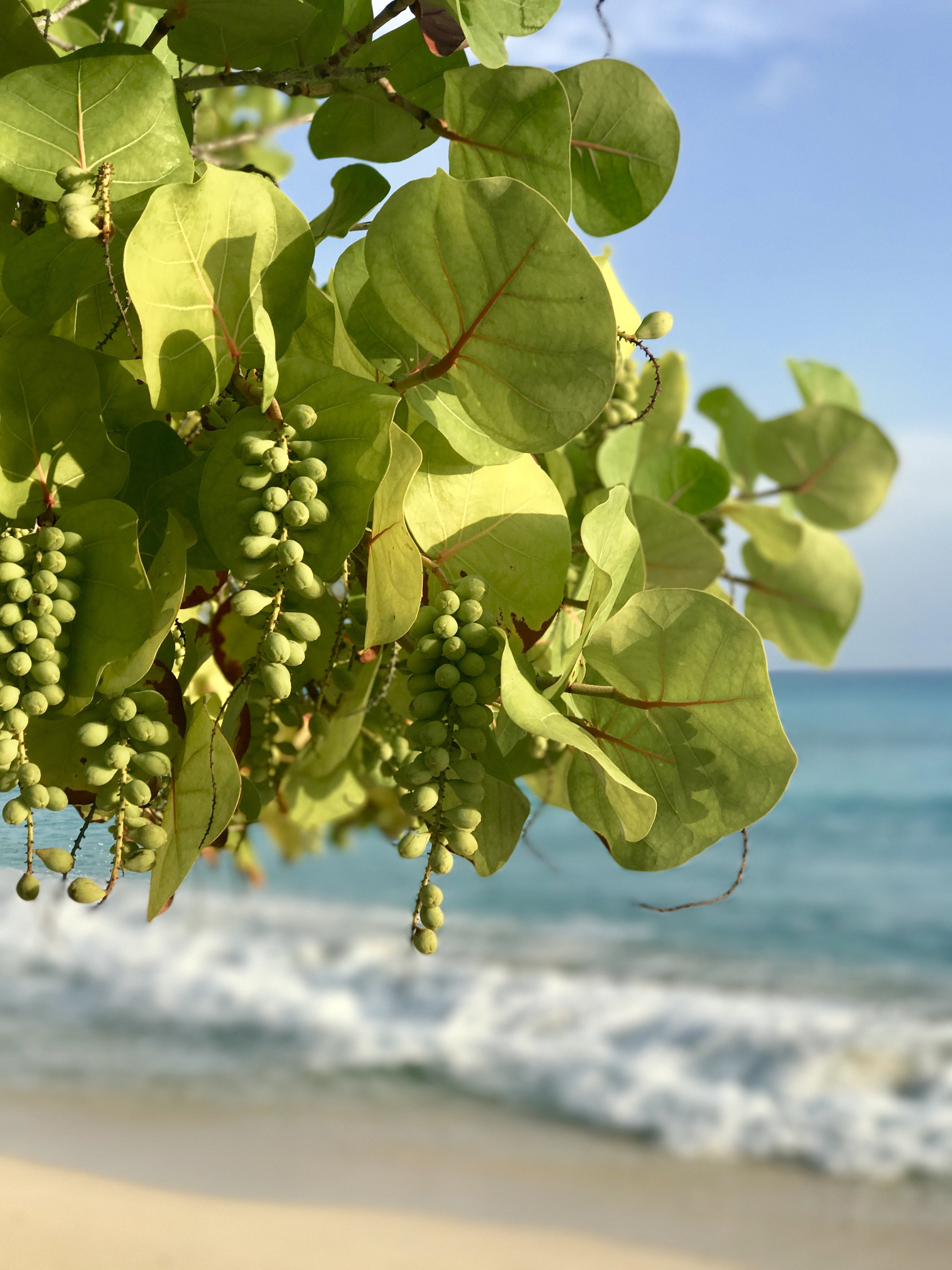
Sea grapes were just barely beginning to ripen in our time in Cayman. I only found 2-3 edible fruits. Unfortunately I ate them before I snapped a photo. This is another great wild edible of the tropics (including Florida). I wish we were able to find a few more. When Sea grape get ripe they become a beautiful pinkish purple. The flavor is pretty unique as it is a bit sweet and a bit salty. It has a few notes that taste a bit like grape well actually a bit more like wine. Maybe next time I will luck out and find a few more ripe ones.
Bush medicine
After days of eating tropical fruits along the beaches of Cayman and foraging along the roadside. I ended up with a little sun burn. I ended up doing a little drive by botany in search of back saving slippery goop of the aloe plant. I ended up spotting some in the garden of a small local restaurant the West Bay Diner. We decided to poke our head in to get a bite of some of that famous Caymanian jerk chicken. I had a Jerk Chicken sandwich which I am pretty sure is the best sandwich I have ever eaten. If 90(f)+ degrees isn’t hot enough at for you, you should should put some scotch bonnet hot sauce in your belly. Then you will really be sweating. While sitting down to eat we ran into a local Caymanian woman who was eating there. As it turns out the aloe medicine had lead us to the right spot. After chatting a bit I started talking about my botanical research in the Islands and my work with Plants and Healers International. We talked about the medical system of Cayman which if you have the cash is great but if you don’t good luck. She said “its better if you stay out of the hospital to begin with. This is why we use herbal medicines.” She taught us a simple remedy for back pain.
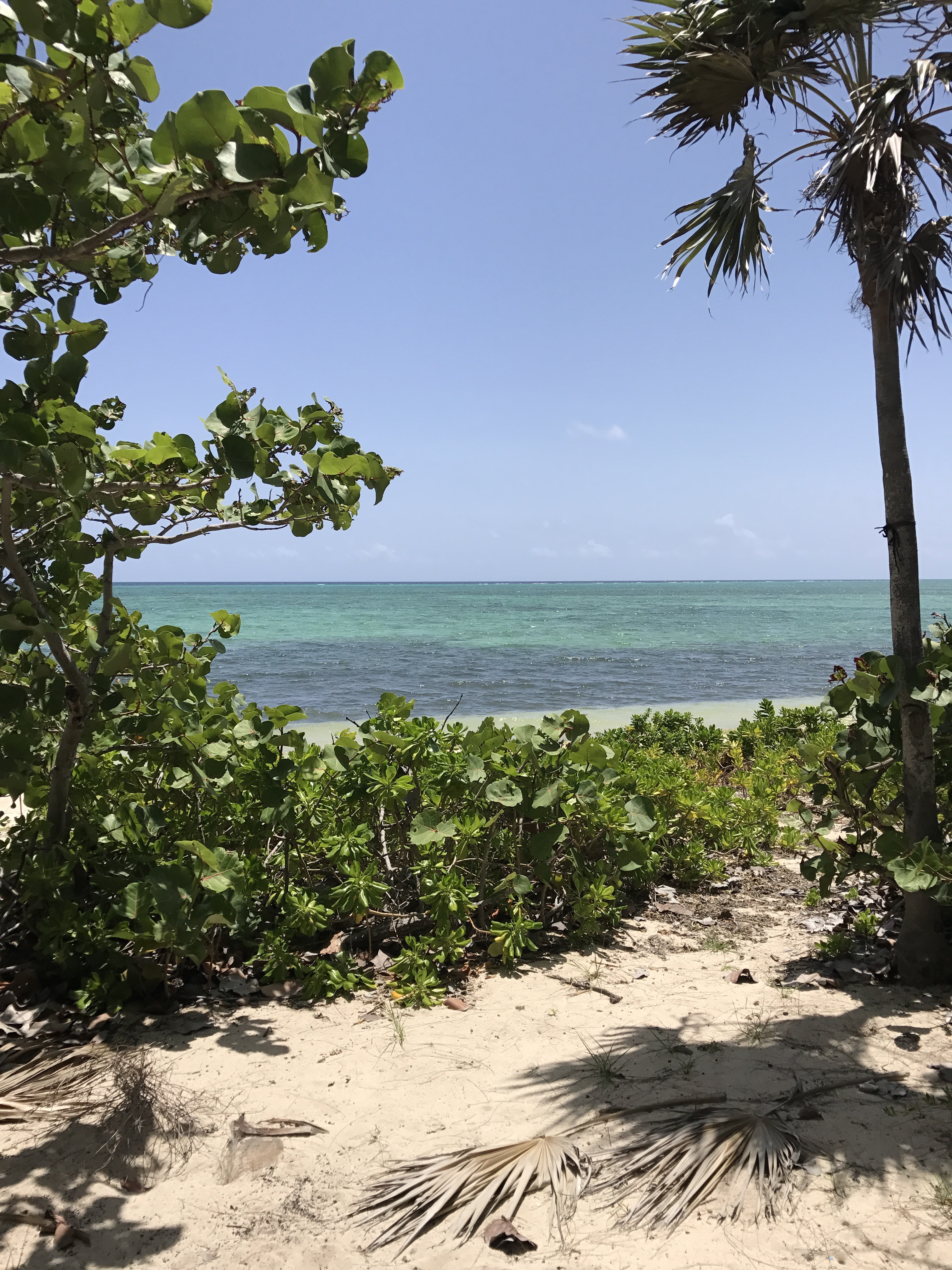
Seagrape (Coccoloba uvifera) and coconut palm found in Baker’s National Park
You are going to need gloves for this one preferably leather or something impenetrable other wise you will meet the glochid up close and personal. Glochids are tiny stiff hairs that will get stuck in your skin and stay there. No fun at all!
Caymanian back pain relief formula
- Take a pad of the prickly pear cactus and shave off the spines and glochids. Alternatively you can quickly singe the pad over a fire.
- Once the pad is spine free peel back the skin to expose the juicy insides.
- Slice the juicy center into long strips
- Place the inner pulp strips into a container of fresh coconut water and allow to sit over night.
- Drink throughout the day for relief of back pain.
She said “the pain should be gone in a few hours. This formula cleanses out the toxins. Living simply and using these plant medicines can keep us strong and healthy.” Inspired by our interest in plant medicine and natural healing she invited us to meet her brother who practices bush medicine on Cayman Brac another island 90 miles north east of Grand Cayman. She said he sees all kinds of clients treating everything from pain to helping people with cancer. Unfortunately I will have to save this meeting for another time as this meeting was the final night of my trip. I plan to return to Cayman to learn more about the bush medicine practice and the medicinal plants of the Caribbean.